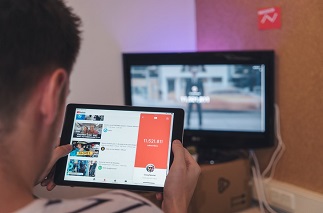Posts

How to Botox’ on YouTube: Influence and Beauty Procedures in the Era of User-Generated Content
The current media environment is complex and has important effects on all aspects of life, including beauty and health. In this sense, YouTube has become one of the main contexts for the dissemination of tutorials and content related to medical procedures such as the application of Botox. Thus, the present study constitutes the first exploratory analysis of YouTube videos in Spanish related to this procedure. A preliminary analysis of 221 YouTube videos yielded a final sample of the 50 most viewed videos within this genre. The analysis was carried out through a quantitative content analysis assessing the popularity of the videos, contact and emotive strategies by the creator, the credibility conveyed, and the characteristics of information about the procedure itself. Results suggest that these influencers align with mainstream Internet celebrity culture in practices that aim at increasing their following and views, as well as calls for subscriptions and visits to other platforms and profiles. Moreover, they include different strategies to establish their credibility but emphasize personal experience. The positive portrayal of the procedure, including positive emotions and content that highlights the benefits, is interesting and supports the commercial nature of much of the content.

Kid influencers in Spain: understanding the themes they address and preteens’ engagement with their YouTube channels
This research analyses the contents of the videos of the ten Spanish children's YouTube channels with the highest number of followers and video plays to identify correlations between the thematic axes of the videos and the increase in digital engagement data. Little is known about the topics that the most popular Spanish-language YouTube influencers share with preteens and young adults' audience. In response, this exploratory study will use content analysis to examine this gap and contrast the themes that its videos reflect against others. For this purpose, interpretive-based content analysis is carried out based on an analysis sheet validated by expert judgment. Among the main results, it is shown that most of the children who are the lead character of the channel are currently between 10 and 12 years old, having created the channels an average of five years ago, which shows how early many YouTubers are starting in this industry. There are also differences in the thematic axes of the channels' videos according to the gender of the children's influencers, with a higher representation of male YouTubers devoted to gameplays, while their female peers have a more significant presence in videos in the lifestyle category. It is concluded that there is a need to supervise the contents accessed by children on this platform since it can deepen not only gender gaps but also become a wrong reference of role models.

Branded Content in Fashion Research: Bibliometric analysis by correlations
Information and Communication Technologies (ICT) have revolutionized all human interactions, creating new spaces and platforms for consumption and entertainment. In that regard, marketing and advertising have had to adapt by refocusing existing tools, as well as creating new strategies to reach their target audiences. Among these emerging tools are the Branded Content, which combines the conventional advertising message with entertainment and ICT, to create emotional and entertainment links between the consumer and the brands. However, given the novelty of Branded Content as an object of academic study, this research seeks to make a mapping of the state of the art that serves as a starting point for the epistemological understanding of the phenomenon, as well as to know the different conceptual positions of the most cited authors of Branded Content, specifically in fashion marketing research. For this objective, a bibliometric analysis is performed through a strategy of co-occurrence and co-citation of Boolean operators from the Scopus database, using the BibExcel tool for frequency counting and VosViewer for the visualization of data and interaction maps. The results indicate that between 2016 and 2018 the co-citation keywords varied widely, from terms such as "content analysis" and "marketing" in 2016, to "fashion films" in 2018, which clearly shows that there is not yet an academic and possibly even a pragmatic consensus on the delimitations of Branded Content.
